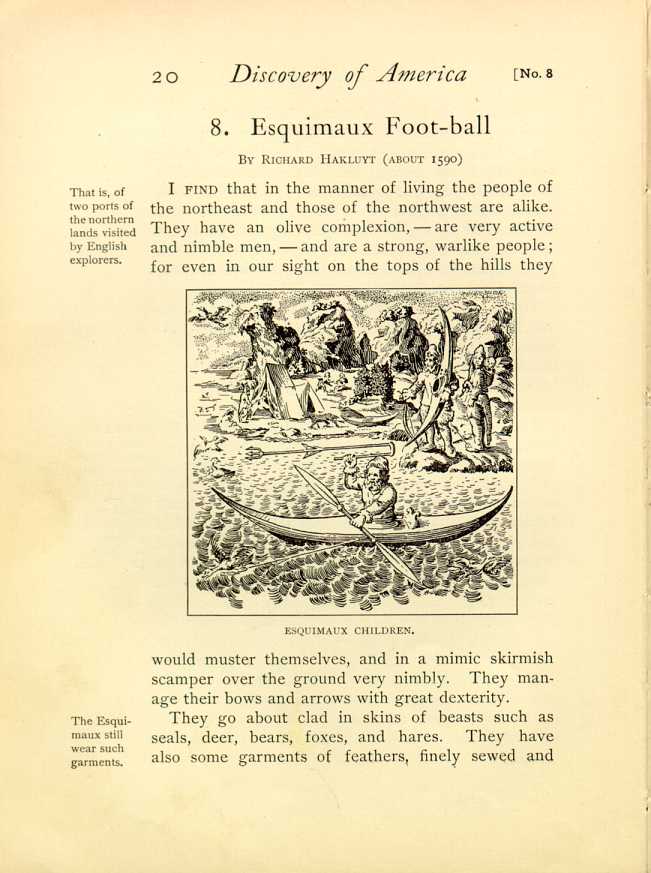| Colonial Children | ||
8. Esquimaux Foot-ball
BY RICHARD HAKLUYT (ABOUT 1590)
I FIND that in the manner of living the people of the northeast and
those of the northwest are alike.[46] They
have an olive complexion, are very active and nimble men, and are a
strong, warlike people; for even in our sight on the tops of the hills
they

ESQUIMAUX CHILDREN.
[Description: Black and white illustration of a man in a canoe with a
hunting spear or harpoon; in the background a man and a woman with a
child on her back look on.]
They go about clad in skins of beasts such as seals, deer, bears, foxes, and hares.[47] They have also some garments of feathers, finely sewed and
These people are by nature subtle and sharp-witted, ready to understand our meaning by signs and make answers that can be well understood. If they have not seen the thing whereof we ask, they will wink or cover their eyes with their hands as if to say it had been hid from sight. If they do not understand what you ask them, they will stop their ears. They are willing to teach us the names of anything in their language which we desire to know, and are quick to learn anything of us. They delight in music and will keep time and stroke to any tune which we may sing, both with their voice, head, hands, and feet, and will sing the same tune after us.
They live in caves in the earth and hunt for their dinners just as the bears and other wild beasts do. They eat raw flesh and fish.
On the twenty-first of August the captain of our ship sent a boat on shore for wood with six of our men who had friendly dealings with these Esquimaux. After that, they beckoned us on shore several times to play foot-ball with them, and some of our company went on shore to play with them; but nimble as they were, as often as they struck at the ball our men won the game.
| Colonial Children | ||